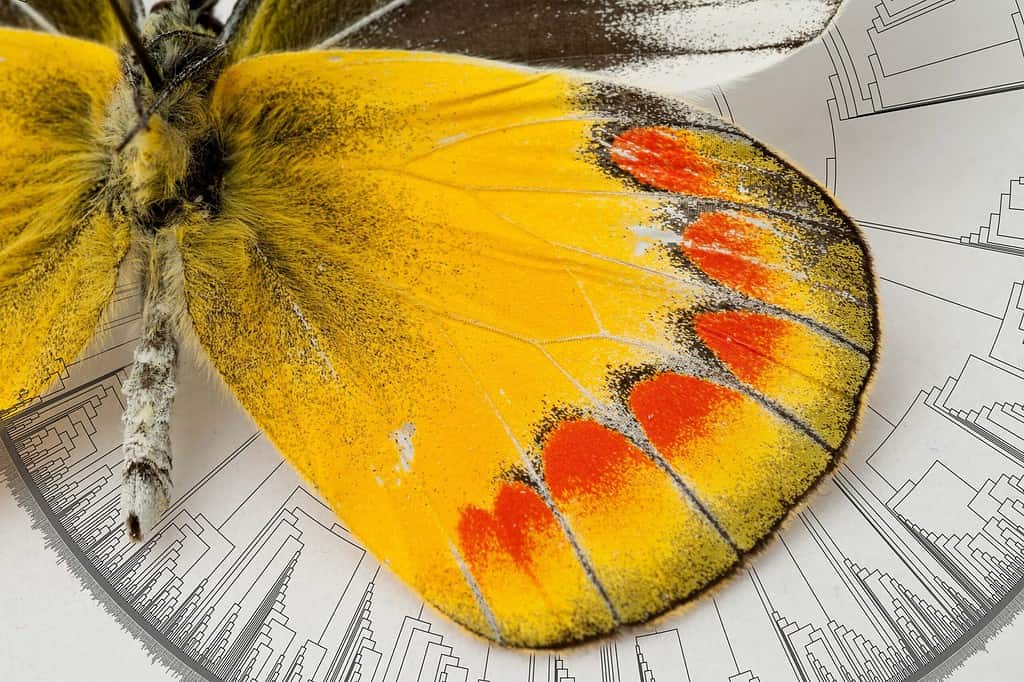Butterflies have been a source of fascination for naturalists, scientists, and the general public for a long time. While they’ve been extensively studied, there’s still a lot to learn about their evolutionary history and the factors that drive their diversification. Now, for instance, scientists have discovered the true origin of the first butterflies and their eating habits.

A team of researchers created the world’s largest butterfly tree of life, compiled with DNA from over 2,000 species representing all butterfly families and over 90% genera. They used this framework as a guide to trace the movements and feeding habits of butterflies through time in a puzzle that led back to North and Central America.
The history of butterflies
Lead author Akito Kawahara from the Florida Museum of Natural History told ZME Science he was interested in this project since he started collecting butterflies as a kid. “Ever since I first volunteered as an elementary school student at the American Museum of Natural History in New York City, I had wanted to do something like this,” he said.
All butterflies evolved from a group of pioneering moths that began flying during the day, approximately 100 million years ago. These moths discovered the benefits of nectar-rich flowers, which had co-evolved alongside bees. This one pivotal event in the evolutionary history of moths led to the development of the entire butterfly lineage.
There are now about 19,000 butterfly species. Understanding the history of the group required information on their modern distributions and host plants. Prior to this study, there wasn’t a single place for researchers to access this data. “The information we needed existed in field guides that hadn’t been digitalized,” Akito Kawahara said.
The researchers created their own database, translating and transferring the content of books, museum collections and websites into a single repository. The database tells a dynamic story, they explained, with rapid diversifications and improbable dispersals. Some groups traveled very long distances and others remained in the same place.
The origin of butterflies
As it turns out, butterflies first appeared in Central and Western North America when the continent was divided by an expansive seaway, the researchers found. Present-day Mexico was connected in a long arc with the United States, Canada, and Russia, while North and South America were not yet connected by the Isthmus of Panama.
Despite the proximity of South America to Africa, butterflies took a longer route, traveling across the Bering Land Bridge into Asia. From there, they spread quickly, radiating into Southeast Asia, the Middle East, and the Horn of Africa, eventually reaching India, which was then an isolated island surrounded by miles of open sea.
Their migration to Australia was even more remarkable, as Australia was still joined with Antarctica, the last remaining part of the supercontinent Pangaea, which once united almost all the land mass on Earth. It’s possible that butterflies may have lived in Antarctica when temperatures were warmer, and made their way across the continent’s northern edge into Australia before the two landmasses separated.
In the far north, butterflies remained on the edge of western Asia for up to 45 million years before finally migrating to Europe. The reason for this prolonged delay is unclear, but it continues to have an impact today, according to Kawahara. “Europe doesn’t have many butterfly species compared to other parts of the world,” he said.
After establishing themselves, butterflies underwent rapid diversification alongside their plant hosts. By the time dinosaurs became extinct 66 million years ago, nearly all of the contemporary butterfly families had emerged, each displaying a distinct preference for bean plants. “This was true on every family of butterflies,” Kawahara said.
Over time, bean plants have expanded their range of pollinators, including bees, flies and hummingbirds. Similarly, butterflies have also broadened their food sources. According to Pamela Soltis, a co-author of the study, the relationships between butterflies and flowering plants played a crucial role in transforming butterflies from a minor offshoot of moths into one of the world’s largest groups of insects today.
The study was published in the journal Nature.



